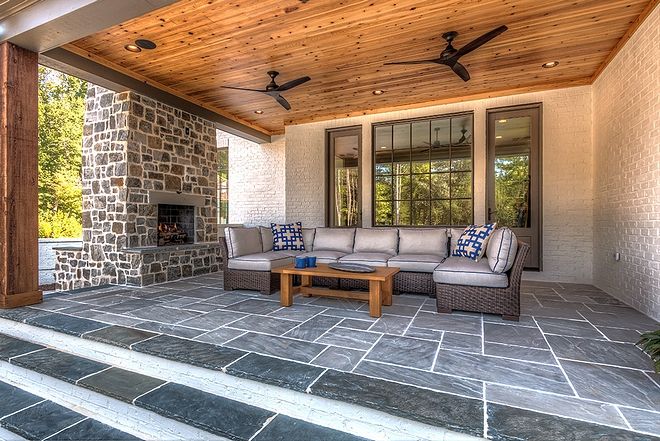When it comes to enhancing the beauty and functionality of your outdoor space, few features can rival the elegance and charm of an Outdoor Tongue And Groove Ceiling. Whether you’re looking to create a cozy patio, a welcoming porch, or an inviting outdoor kitchen, a tongue and groove ceiling adds a touch of sophistication while offering practical benefits such as durability and weather resistance. In this article, we’ll explore the ins and outs of outdoor tongue and groove ceilings, from their construction and installation to their advantages and design possibilities.

What is an Outdoor Tongue And Groove Ceiling?
An outdoor tongue and groove ceiling is a type of ceiling treatment characterized by interlocking wooden boards that fit together seamlessly, creating a smooth, uniform surface. The “tongue” refers to a protruding edge along one side of the board, while the “groove” refers to a recessed edge along the other side. When installed, the tongue of one board fits into the groove of the adjacent board, creating a tight, secure connection.
Construction and Materials
Outdoor tongue and groove ceilings are typically constructed using high-quality, moisture-resistant wood species such as cedar, redwood, or cypress. These woods are naturally resistant to rot, decay, and insect damage, making them ideal for outdoor applications. The boards are milled with precision to ensure a perfect fit, and they may be pre-finished with a protective sealant to enhance durability and weather resistance.
Installation Process
The installation process for an outdoor tongue and groove ceiling involves several steps:
- Preparation: Ensure that the ceiling surface is clean, dry, and free from any debris or protrusions. Install furring strips or a solid substrate to provide a stable base for the tongue and groove boards.
- Board Layout: Determine the direction and pattern in which the boards will be installed. Consider factors such as the orientation of the ceiling joists, the desired aesthetic, and the length of the boards.
- Cutting and Fitting: Measure and cut each board to size, accounting for any obstacles such as light fixtures or vents. Test-fit each board to ensure a snug fit and make any necessary adjustments.
- Fastening: Secure the tongue and groove boards to the ceiling substrate using corrosion-resistant nails or screws. Place fasteners at regular intervals along the length of each board, ensuring that they penetrate the substrate and provide sufficient support.
- Finishing Touches: Fill any gaps between the boards with wood filler or caulk to create a seamless appearance. Sand the surface smooth and apply a final coat of sealant or exterior-grade paint to protect the wood from moisture and UV damage.
Advantages of Outdoor Tongue And Groove Ceilings
Outdoor tongue and groove ceilings offer numerous benefits, including:
- Weather Resistance: The tight interlocking design of tongue and groove boards provides excellent protection against moisture, making them ideal for outdoor use.
- Durability: High-quality wood species such as cedar or redwood are naturally resistant to rot, decay, and insect damage, ensuring long-term durability and low maintenance.
- Aesthetic Appeal: Tongue and groove ceilings add a touch of elegance and sophistication to any outdoor space, enhancing its visual appeal and creating a warm, inviting atmosphere.
- Versatility: Outdoor tongue and groove ceilings are suitable for a wide range of applications, from covered patios and porches to outdoor kitchens and gazebos. They can be customized to suit any design style or architectural theme.
Design Possibilities
With outdoor tongue and groove ceilings, the design possibilities are virtually endless. Whether you prefer a rustic, natural look or a more modern, sleek aesthetic, you can achieve the perfect ambiance for your outdoor space. Consider incorporating decorative elements such as exposed beams, recessed lighting, or ceiling fans to enhance the functionality and visual appeal of your tongue and groove ceiling.
Read too: A Comprehensive Mr Cool Ceiling Cassette Review: Unveiling Excellence
Maintenance and Care
While outdoor tongue and groove ceilings are relatively low maintenance, they still require periodic care to ensure their longevity and beauty. Here are some maintenance tips to keep your ceiling looking its best:
- Regular Cleaning: Remove dirt, dust, and debris from the surface of the ceiling with a soft-bristle brush or a gentle spray of water. Avoid using harsh chemicals or abrasive cleaners, as they can damage the wood.
- Inspect for Damage: Periodically inspect the ceiling for signs of damage, such as cracks, splits, or water stains. Repair any issues promptly to prevent further damage and maintain the integrity of the ceiling.
- Reapply Sealant: Depending on the type of finish applied to the wood, you may need to reapply sealant or paint every few years to protect the wood from moisture and UV exposure. Follow the manufacturer’s recommendations for proper application and maintenance.
Conclusion
An outdoor tongue and groove ceiling is a versatile and stylish addition to any outdoor space, providing beauty, durability, and weather resistance for years to come. Whether you’re relaxing on your porch, entertaining guests on your patio, or cooking in your outdoor kitchen, a tongue and groove ceiling adds a touch of elegance and sophistication while enhancing the functionality and comfort of your outdoor living area. Consider incorporating this timeless ceiling treatment into your next outdoor renovation project and create a stunning backdrop for all your outdoor activities.